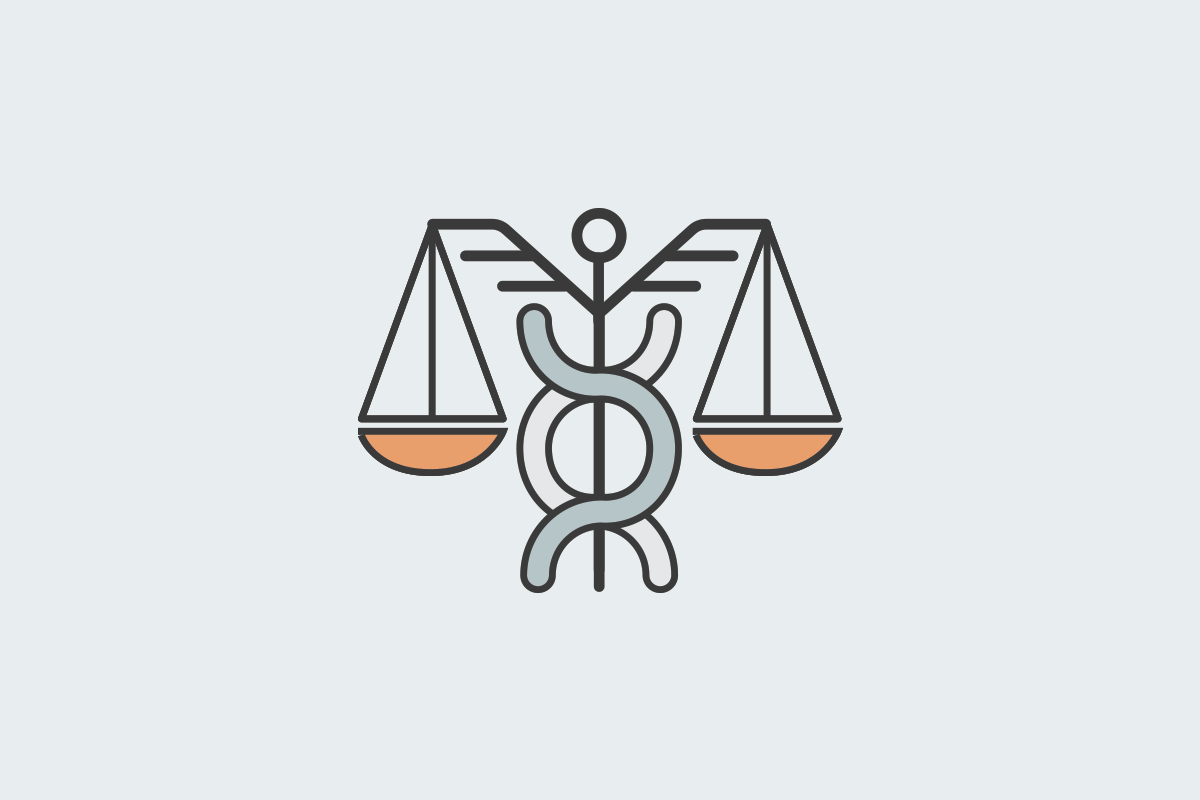Building a sense of belonging in the workplace is crucial for employee well-being and performance. Discover five strategic steps, applicable even for remote workers, that not only reduce turnover and sick days but also foster a strong culture of support. From addressing cultural differences to prioritizing mental well-being, these steps provide a roadmap for employers to create a workplace where every employee feels valued and connected.
Your Welcoa membership has expired.
The Fate of Telehealth and State Licensure Laws Post-COVID19, and How Wellness Programs can Adapt
The following article does NOT constitute legal advice and should not be used as such. It is for educational purposes only. Readers should retain legal counsel to obtain definitive answers.
Many wellness providers and programs want to take advantage of the increasing availability of virtual platforms to deliver health and wellness services to patients and clients across the United States. This is particularly true for companies that have employees scattered in multiple states. It is easier for those companies to contract with one vendor to supply health and wellness services, which may include health coaching, Employee Assistance Programs (EAPs) or counseling services, to name a few examples. To make that possible, and legal, however, the workplace wellness programs need to consider state licensure and telehealth laws, because both matter when delivering health services virtually. This blog post will describe typical state and federal telehealth laws and typical state licensure laws, how those laws generally changed during the COVID19 pandemic, and the current status of those laws as companies move forward with creating effective workplace wellness programs.
State and Federal Telehealth Laws
State telehealth laws regulate a variety of topics relating to telehealth. State laws may dictate:
- which licensed professions can use telehealth (such as physicians, nurses, physical therapists and mental health treatment providers)
- where the patient must be located when using telehealth (in their home or at a certain facility)
- whether and when the patient must give informed consent before using telehealth
- what telehealth services (if any) are covered by the State Medicaid program
- whether private insurers must pay the same rates for telehealth services vs. in-person services
- whether an out of state provider may offer medical or psychological services to patients located in the state
- whether a payer like Medicare or Medicaid will pay for telehealth if it is delivered in “real time” only, or whether a payer will pay for asynchronous telehealth services.
See generally, https://www.cchpca.org/. State laws vary on each of these topics, and keeping up with them can be a challenge for employers that operate in multiple states.
And it is not only the states that have laws relating to telehealth. The federal government, particularly the agencies under the federal Department of Health and Human Services (DHHS), such as the Centers for Medicare and Medicaid Services (CMS) and the Office of Civil Rights (OCR) have rules relating to telehealth use. CMS has rules relating to when the Medicare program covers telehealth services. OCR has rules relating to privacy and security of data, which impacts whether health providers can use telehealth platforms (i.e., those platforms must meet standards under the Health Insurance Portability and Accountability Act (HIPAA)).
How COVID19 Affected Telehealth Laws
Because of stay-at-home orders and other pandemic restrictions and fears, COVID19 accelerated the adoption and creation of telehealth technologies. To help increase access to telehealth, state and federal authorities relaxed telehealth laws to allow more patients and providers to take advantage of the various platforms.
According to one source, these regulatory changes can be grouped into four categories:
- Flexibility under the Health Information Portability and Accountability Act (HIPAA). These changes by the OCR allow for more technologies, such as Apple FaceTime, Microsoft Teams, and Skype to be used for telehealth purposes (where as previously those platforms were not compliant).
- Medicare and Medicaid coverage of telehealth. Changes to Medicare and Medicaid rules have increased coverage of telehealth for services and providers who were pre-pandemic not covered by these federal programs.
- Licensure Laws. States have loosened their health professions licensure laws to allow out of state providers to provide services to patients in a state in which that provider does not have a full license.
- Prescription drug laws. Laws that govern the prescribing of controlled substances have been relaxed to allow providers to prescribe such drugs more easily, such as without an in-person visit, through telehealth technologies.
According to the Kaiser Family Foundation:, some other COVID19-related changes include:
- CMS has allowed Medicare beneficiaries to access telehealth services from their homes;
- States have mandated insurers to cover telehealth services at the same reimbursement rate as in-person services
- Insurers have reduced patient cost sharing for telehealth use
Some of these loosened restrictions will be permanent, such as Medicare and Medicaid coverage of telehealth services. See e.g., https://www.manatt.com/insights/newsletters/covid-19-update/executive-summary-tracking-telehealth-changes-stat. At this time it is unclear whether the HIPAA changes will remain after the pandemic concludes. According to OCR, the relaxed HIPAA standards for telehealth technologies will expire when the Secretary of DHHS declares that the public health emergency no longer exists. Other relaxed standards, such as many of the state licensure standards, are already disappearing as the pandemic subsides. See https://www.fsmb.org/siteassets/advocacy/pdf/states-waiving-licensure-requirements-for-telehealth-in-response-to-covid-19.pdf.
State Licensure Laws
As alluded to above, state governments have relaxed licensure rules during the COVID19 pandemic. Many states allow out of state providers to offer services to patients in a state where that provider is not licensed. The intent behind these expansions was to help increase the number of providers available to help patients, as COVID19 stretched health system resources. However, many states have declared the public health emergency to be over. For example, Colorado, Delaware, Florida, Maine, Maryland, Massachusetts, Michigan, Montana, Nebraska, New Jersey, and Wisconsin, among others, no longer allow license waivers for out of state providers. See https://www.fsmb.org/siteassets/advocacy/pdf/states-waiving-licensure-requirements-for-telehealth-in-response-to-covid-19.pdf.
What does this mean for wellness programs that use licensed health providers, such as physicians, nurses, physical therapists, chiropractors, dietitians, and mental health therapists as part of their wellness offerings? It means that if a wellness program serves a client that has locations in multiple states, that program needs to determine whether the providers who deliver the services have the proper licenses in each of the states in which they operate. Although COVID19 provided some relief from state licensure requirements, and telehealth technologies proliferated and increased the possibility of offering licensed services nationally, state licensing laws will impede those efforts.
How Can Wellness Programs Reduce Risk While Still Operating Across State Lines?
The key legal provisions to allowing health services to be offered nationally are state licensing rules and state telehealth rules that allow insured patients to have flexibility as to where they can use telehealth technology in order for it to be reimbursed. The latter type of laws (flexibility as to where patients can use telehealth technology) is likely to continue post-pandemic. However, as discussed above, state licensure flexibility is already expiring. So, wellness programs should anticipate that they will not be able to use the same licensed professionals in multiple states, unless those professionals are properly licensed in all of those states. For the licensed professional, being licensed in multiple states is not as impressive as it sounds. State licensure carries obligations and risk. The more states in which a professional is licensed, the more rules and standards with which that professional must comply. Compliance with more rules, such as continuing education and reporting obligations increases the risk that something will be missed and a disciplinary action will ensue against that professional.
So, an alternative for wellness programs to consider is to contract with separate providers in each state in which the wellness program does business. That way, the wellness program faces less risk that its licensed providers are engaging in unauthorized practice. The program can still take advantage of all the telehealth technologies that have exploded onto the health and wellness scene (assuming HIPAA compliance and assuming HIPAA even applies to the wellness program), but without the worry of possible licensing board action.
Another alternative is for the wellness program to avoid licensed practitioners altogether and adopt the coaching model, which is unregulated. As discussed in previous blog posts involving EAPs, using coaches and then referring wellness program participants to licensed providers when necessary is a way to avoid not only state licensing laws, but also several federal employee benefit law compliance.
If your wellness program needs compliance assistance, contact the Center for Health and Wellness Law, LLC. We are here to help.

Barbara J. Zabawa
President of the Center for Health and Wellness Law, LLC
wellnesslaw.com
Health Promotion Program Legal Updates*
Every 3rd Wednesday from 10:00–11:00 AM CT
*This is an exclusive WELCOA Member Resource.




